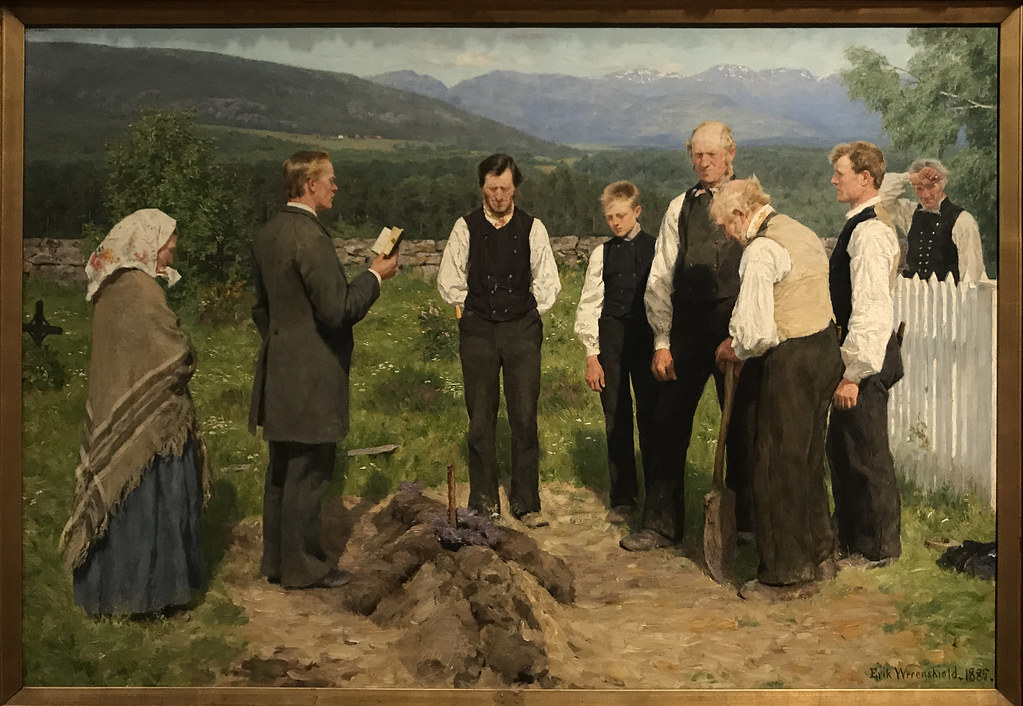Ralph Waldo Emerson’s five-year-old son, Waldo, called “Wallie,” died of scarlet fever on January 27, 1842. “Shall I ever dare to love any thing again,” he wrote the next day. “Farewell and Farewell, O my Boy!” That spring Emerson composed one of America’s finest laments. But the poet’s grief had only begun.
All too soon, the spring harvest demanded Emerson’s attention. He begrudged its attendant duties and the new fields of thought that called to him. “An eye fastened on the past unsuns nature,” he wrote in March, “bereaves me of hope, and ruins me with a squalid indigence which nothing but death can adequately symbolize.”
His reaction is characteristic of acute grief: an inability to initiate and maintain organized activity in the first onslaught of loss. Then Emerson surprises us. The poet spent the early months of 1842 writing a memorial poem, entitled “Threnody,” or lament. In it, he honors Wallie while mourning nature’s implacable advance:
Not mine — I never called thee mine, But Nature's heir, — if I repine, And seeing rashly torn and moved Not what I made, but what I loved, Grow early old with grief that thou Must to the wastes of Nature go, — . . . The eager fate which carried thee Took the largest part of me: For this losing is true dying
Two years later, in 1844, Emerson penned an essay on his inability to find meaning in Wallie’s death. “Souls never touch their objects,” he observes. “Something which I fancied was a part of me, which could not be torn away without tearing me nor enlarged without enriching me, falls off from me and leaves no scar. . . . I grieve that grief can teach me nothing, nor carry me one step into real nature.”
Many Emerson scholars wrestle with this last sentence. One suggests it indicates indifference. Another posits that the poet is acknowledging his own limitations. Others maintain that he is expressing an awareness of the uselessness of grief. Harvard philosopher Stanley Cavell spots the desperation in Emerson’s tone, interpreting the passage “to mean the ground of the world falling away, the bottom of things dropping out, ourselves foundered, sunk on a stair.”
Poet Linda Pastan also compares sorrow to a circular staircase. In her 1977 poem, “The Five Stages of Grief,” she relates her struggle with the titular phases until she victoriously reaches final ACCEPTANCE (her capitalization), only to realize that it was all for nothing. “But something is wrong,” she concludes. “I have lost you.”
The following year, Pastan used this piece as the title for her third poetry collection. The poem has since been anthologized in grief books and medical texts. “If I remember correctly,” Pastan said in 1996, “the poem seemed to write itself.” Yet neither Pastan nor Emerson, for all their hard-bitten fatalism, is dismissing the role of healthy mourning.
Emerson’s essay on grief was written two years after Wallie’s death—no time at all in the calendar of mourning. Common knowledge among support groups and therapists holds that the second year is especially difficult. With each birthday, anniversary, special occasion, or holiday, the death’s finality is brought home anew. Such finitude is a devastating aspect of loss. As the years continue, we may learn to live with waves of sorrow, occasional moments of regret, and even unending loneliness. Still, death and its accompanying grief remain a constant in our lives.
Here I pause. I too am a bereaved father. I too know the relentlessness of grief. I too feel painful anguish that leaves no outward wound. And yet my soul touches and is touched. I did not stop being a father the moment my daughter died. Jess will forever be my child: our love, our relationship, continues on in separation. In this Emerson and I differ, as well we might. “We each have to find our own personal pathway as we deal with loss,” writes death expert Kenneth Doka. “Grief is as individual as fingerprints or snowflakes.”
Emerson’s essay speaks with determination and resolve. It occurs to me that his intent requires no convoluted explanations. Perhaps we should take him at his word. I grieve that grief can teach me nothing may mean exactly what it says. Wallie is gone; no visible scar remains. Mourning provides no lesson, no answers, no closure. The poet is not decrying grief for its lack of utility. He does not insist that some benefit be derived from his son’s death. Instead, it seems that the irrevocable fact of Wallie’s absence presses upon him.
Emerson forcibly illustrates that his wishes are not taken into account. He need not chase a chimera of resolution. “Grief is the price you pay for love,” observes Doka, “but how you grieve is not necessarily a measure of that love.” Emerson has no control over his grief—his love—for Wallie, however much he might hope otherwise. Sorrow and death do not benefit us, he suggests, they do not bother with us at all. They are simply part of life, inextricably linked and absolute, carrying him not “one step into real nature.”
Emerson acknowledges a debt to nature, without which there would be no creation at all, but his loss proves to be ineffable. “The world of poetry is boundless and endless,” observed Friedrich Schlegel, who, along with Goethe and Rückert, was an important influence on Emerson. “But how can it compare to the unstructured and unconscious poetry that stirs in a plant, that lights a child’s smile, that shimmers in the bloom of youth?” There is no comparison, as Emerson knew. This may be why he selected these four lines from “Threnody” for the inscription on Wallie’s gravestone in Sleepy Hollow Cemetery, Concord, Massachusetts:
The hyacinthine boy, for whom Morn well might break and April bloom, — The gracious boy, who did adorn The world whereinto he was born
Image Credit: Erik Werenskiold, “Peasant Burial” (1883-1885) via Flickr










